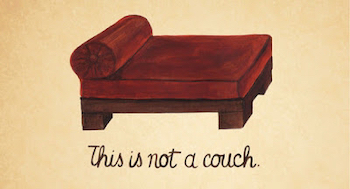The therapy relationship contains its ending from the very beginning as every therapy comes to an end eventually. Under ideal conditions, therapist and patient arrive together at the decision to end and they take the time necessary to fully and respectfully end the relationship. It is a ritual of goodbyes — taking the time to look back at what has happened, what has changed. It’s time to look at what has been accomplished and what has not. It is an exit interview and a farewell all in one and ideally takes up a number of sessions. When this happens there are good feelings all the way around, along side the inevitable sadness at saying goodbye.
I get upset when it is suggested, as it not uncommonly is, that therapists encourage people to stay in therapy because they want the money. I am certain there are some therapists like that. Like there are lawyers or accountants or plumbers or mechanics who place income above ethics. I have been in therapy with a number of therapists myself and I have never encountered this as in issue with any them. And I know that I and the people I have supervised have dealt with anxiety about money in supervision a lot in order to keep that anxiety as much out of the work as possible.
Good Endings and Bad Endings
Not all terminations are ideal. Someone asked me recently what it is like when a patient leaves abruptly. Well, it’s hard. Sometimes a patient will call and leave a voicemail saying they won’t be back. Or send an email or a note or a text. Or not show up and then not respond to calls. Sometimes this is part of a pattern in the therapy and the patient eventually returns. But more often, they do not and we end up not knowing why. And that is hard because it is in the nature of therapists to wonder and want to know what happened.
It’s my job to challenge any changes in our work that patients bring up. It is my job to ask when someone announces they want to leave therapy to ask why now and to raise what I see as possible issues. It is not about wanting to control the patient or protect my income. It is my job. I ask at the beginning of therapy why they are seeking therapy now and we look at that. I ask at the end why they want to leave now and we look at that.
I think it is hard to remember that the therapist is a person and that therapy is a relationship. It is a RELATIONSHIP. Patients and I spend an hour or so together every week and they live in my thoughts and occupy space in me beyond that hour. It’s a relationship. So when a patient says to me, “I want to stop now”, I ask why now and I ask that we look at this because it is part of our relationship, because I am a part of this relationship. And if that patient won’t talk about it, won’t look at why and leaves, maybe in a huff and full of mutterings about me, then she leaves. But she will still occupy space in my thoughts as I try to understand what happened and what might have led to this. And when she wants to return, as often happens, my door is open and we begin again and I do so without carrying resentment.
It all comes with the territory.
There are all kinds of reasons for ending — money, time, dissatisfaction, discomfort with the process, dislike, or feeling that we have done the work that we can and want to do. But it is the abrupt ones, with no chance to really say good bye or talk through what has happened, these are the endings that are hard on therapists, and ultimately on patients as well. Ending well is important. It lets us go forward without lingering feelings and resentments.
Ending is hard. It is hard no matter where in our lives we do it. And we tend to end in therapy in the same style we end other relationships. There are good endings and bad endings and healing endings and wounding endings. And they are all hard. And we can, all of us, learn to do them with more grace when we are willing to look at how we do it and what endings mean to us and have meant in our lives.











